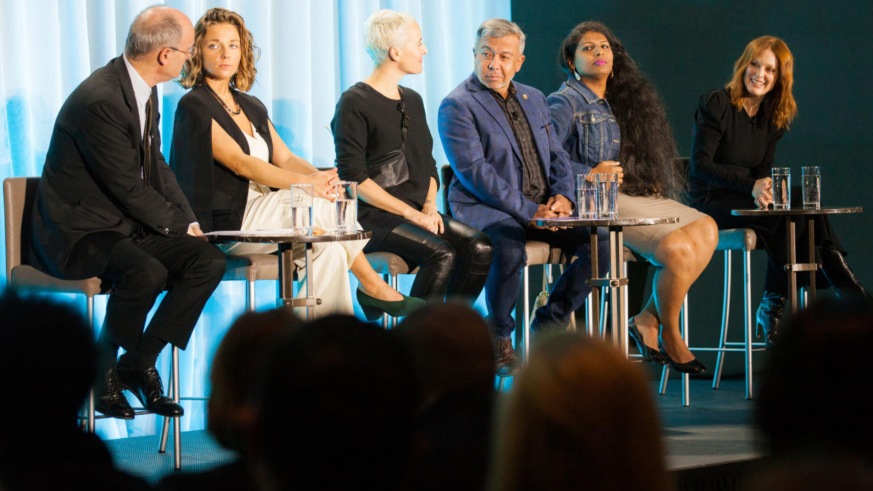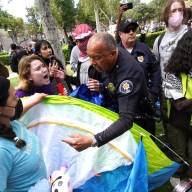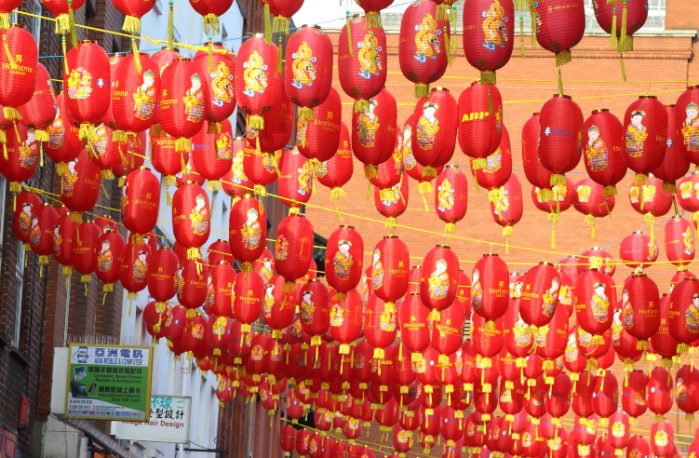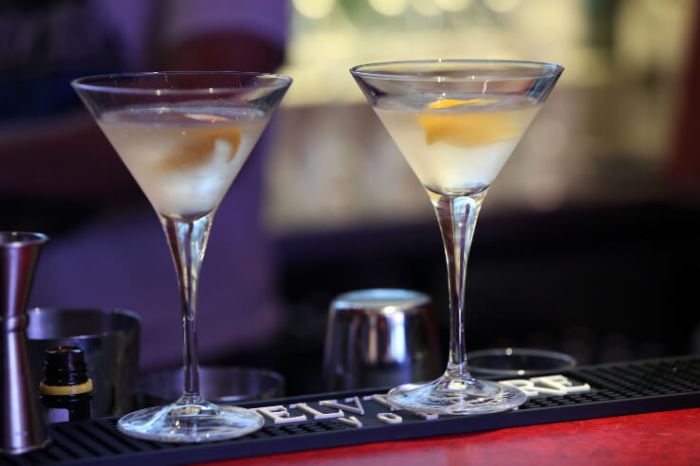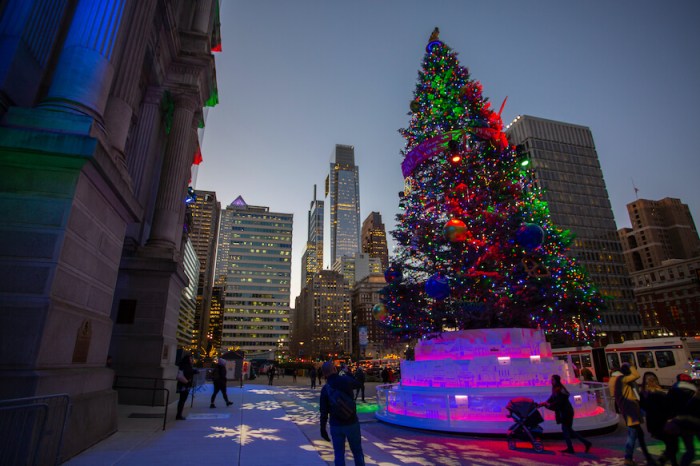From pipe bomb scares to yet another shooting in a house of worship, politically motivated violence has dominated the headlines in recent weeks. While many factors have contributed to the country’s divisiveness and corrosive dialogue, immigration has come to the forefront of these discussions as President Donald Trump stokes fears over the so-called “caravan” of migrants and threatens to take action on birthright citizenship.
All of these issues seemingly converged at the Museum of Fine Arts on Monday night during a panel on the exhibit “Love Story,” a video installation by Berlin-based artist Candice Breitz, which takes an innovative approach to tackling the refugee crisis. The piece, on display at the MFA through Jan. 21, features six refugees who tell their powerful stories in their own words, juxtaposed against performances of these narratives by Alec Baldwin and Julianne Moore.
Breitz, Moore and two of the interviewees featured in “Love Story,” Luis Ernesto Nava Molero and Shabeena Francis Saveri, were able to attend Monday’s discussion; Baldwin was forced to cancel his appearance due to concerns expressed by the FBI in light of recent events.
“He’s been told it’s not safe for him to make public appearances at the moment,” Breitz explained to the audience, alluding to his outspoken political views and unique relationship with the president.
The threat of politically motivated violence is not a new concept for Molero, Saveri or any of the nearly 70 million people who’ve been forcibly displaced around the globe. Using intimate interviews, Breitz’s “Love Story” is an attempt to both humanize the struggle of refugees as well as take a look at how we experience their stories in today’s frenetic media culture.
During Monday’s event, Molero, a political dissident from Venezuela, described his experience when he first saw “Love Story.” Molero admitted that he cried after seeing it, not because his personal life was on display, but because he was so moved by the other refugees featured and the “universality” of their stories.
“All of us are equal,” said Molero. “We are all human beings.”
Toward the end of the event, Molero also weighed in on the “caravan” situation, noting how the people involved “are not our enemies,” just people who are trying to escape a bad situation.
“These are people in need,” Molero said. “The solution is not putting soldiers with guns to confront them.”
Moore, who performed the narratives of the women in “Love Story,” said her aim was to “help people see others as not other” and that she wanted to use her “cultural status to elevate other stories.”
As for art’s role in affecting change, Breitz admitted during the event that she believes art “does have an impact,” but it’s not enough. The artist encouraged the crowd to take to the streets and vote if they really want to make a difference.
“I don’t think art is adequate,” said Breitz. “I don’t feel that engaging politically through the making of a work of art, for me, is a full complement of what people can do as active citizens in times of great urgency.
“We need to be going out in the streets,” she added. “We need to be engaging in the public sphere.”

